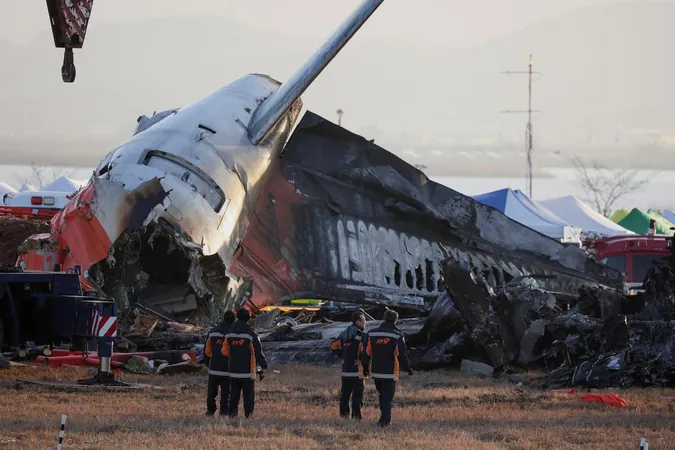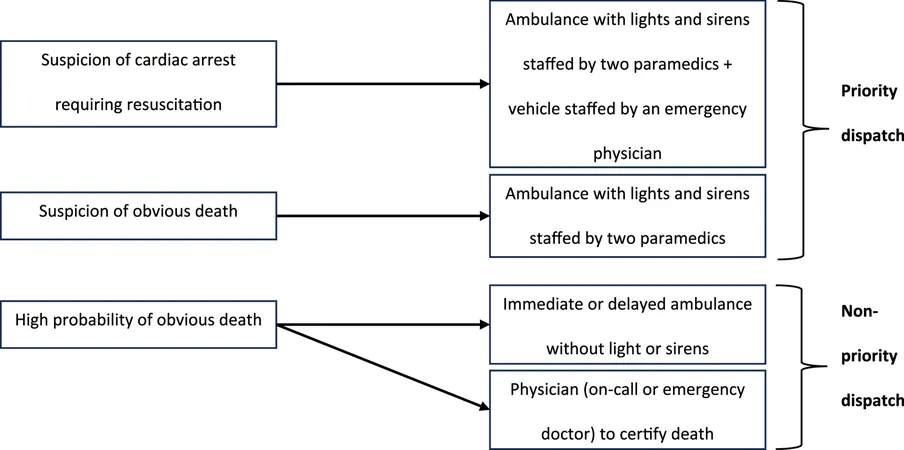
Tragedy Strikes: Investigations Intensify into South Korea's Deadliest Air Disaster Amid Embankment and Bird Strike Concerns
2024-12-31
Author: Wei Ling
As investigations continue into the tragic crash of a Jeju Air jet, which resulted in the loss of 179 lives, questions are arising about safety protocols and the infrastructure surrounding the incident. The crash took place on December 29, when a Boeing 737-800 belly-landed and skidded off the runway, colliding with a concrete embankment and erupting in flames.
Families of the victims, now dealing with immense grief, gathered at the airport awaiting updates on the identification process. Authorities confirmed that of the 175 passengers and four crew members aboard, only two crew members survived the horrific event. The National Police Agency is working tirelessly to expedite identification, employing additional personnel and rapid DNA analysis to facilitate the process; as of December 31, five bodies remained unidentified.
Emerging insights from the airport’s operating manual, recently made available, revealed alarming recommendations regarding the proximity of the embankment to the runway’s end. The Transport Ministry acknowledged the need to evaluate this document before addressing further inquiries. Acting President Choi Sang-mok has mandated an immediate safety inspection of South Korea’s airline operations amidst rising public scrutiny.
Compounding concerns about the crash, investigators are examining the role of possible bird strikes and whether systems aboard the aircraft malfunctioned during its final moments. Eyewitness accounts and video footage suggest the jet was losing control as it veered off the runway, colliding with the embankment at high velocity, triggering a catastrophic explosion.
Captain Ross Aimer, a prominent aviation expert, reflected on the tragedy, stating, "That concrete structure was the reason that everybody got killed." Industry standards dictate that no hard structures should be within 300 meters of a runway’s end, yet South Korean regulations might have allowed the embankment’s location.
Transport Ministry officials have promised to review domestic regulations to identify any conflicts and to reevaluate airport safety measures. Additionally, an urgent inspection of all 101 Boeing 737-800s operated across South Korean airlines is underway and is set for completion by January 3, with Muan International Airport closure extending to January 7.
International support has rolled in, with representatives from the US National Transportation Safety Board and other aviation authorities assisting in the investigation. The urgency for a thorough review is evident as activists and citizens call for accountability regarding airport safety standards.
In a heartfelt gesture, Singaporean Prime Minister Lawrence Wong extended condolences to the South Korean government, emphasizing solidarity in this time of grief.
As authorities piece together the events surrounding this tragic accident, the questions surrounding airport safety regulations, infrastructure, and emergency response protocols remain pivotal topics as investigations unfold. The nation mourns as it seeks answers, striving for improvements to ensure that such a catastrophe is never witnessed again.



 Brasil (PT)
Brasil (PT)
 Canada (EN)
Canada (EN)
 Chile (ES)
Chile (ES)
 Česko (CS)
Česko (CS)
 대한민국 (KO)
대한민국 (KO)
 España (ES)
España (ES)
 France (FR)
France (FR)
 Hong Kong (EN)
Hong Kong (EN)
 Italia (IT)
Italia (IT)
 日本 (JA)
日本 (JA)
 Magyarország (HU)
Magyarország (HU)
 Norge (NO)
Norge (NO)
 Polska (PL)
Polska (PL)
 Schweiz (DE)
Schweiz (DE)
 Singapore (EN)
Singapore (EN)
 Sverige (SV)
Sverige (SV)
 Suomi (FI)
Suomi (FI)
 Türkiye (TR)
Türkiye (TR)
 الإمارات العربية المتحدة (AR)
الإمارات العربية المتحدة (AR)